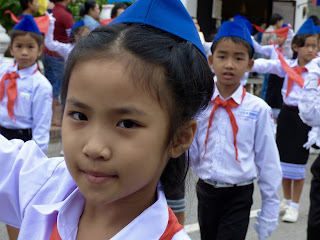Ho Chi Minh City/Saigon
il 6-8 dicembre
Captured in 1859 by the French, Saigon soon became the capital of its Cochinchina colony and was transformed into a provincial town as canals and marshlands were drained, streets were planned, and trees were planted. From 1954 until the fall of the city to the Communists in 1975, Saigon was the capital of the Republic of South Vietnam, but was renamed Ho Chi Minh City after the war, although it is still referred to by both names; I was told that the “old timers” continue to call the city “Saigon”, whereas those who came here after the war call it “Ho Chi Minh City.” It can get confusing because the government disallowed the use of “Saigon” in any official capacity, yet it is still seen in various place names and is also the three letter ticket code (SGN) for the international airport here. Whatever title one uses, however, this city is bustling, full of energy, and, clearly, the commercial and entrepreneurial center of Vietnam, as well as being one of the region's most polluted cities.
Barely here two full days so I had only a brief taste; not enough time to fully enjoy all that Saigon/Ho Chi Minh City has to offer, but the visit provided a sober lesson in history nevertheless.
The Central Post Office (built by the French)
Picture of Ho Chi Minh that hangs inside the post office
Lots of activity outside the post office - locals and visitors
Evacuation of CIA personnel from the top level when the city fell in April,1975
Notre Dame Cathedral
A rooftop view from a local home
The city is a quickly expanding commercial center
"Boys just wanna have fun!"
The Reunification Palace (formerly the palace of the president of the South Vietnamese government during the war)
 |
| The War Room |
Outside the Reunification Palace
The Cu Chi Tunnel Complex, a major part of the Viet Cong battle plan for the south, was a system of underground tunnels with floors, alleys, branches and places for living, dining, and eating. More than 250 km. (approx. 155 miles) long, it is a grim reminder of the lives lost in a war that was a tragedy for both sides.
Traps set for the American military
A photo of one of my travel companions taken from inside a very small section of the tunnel that we entered.









































































